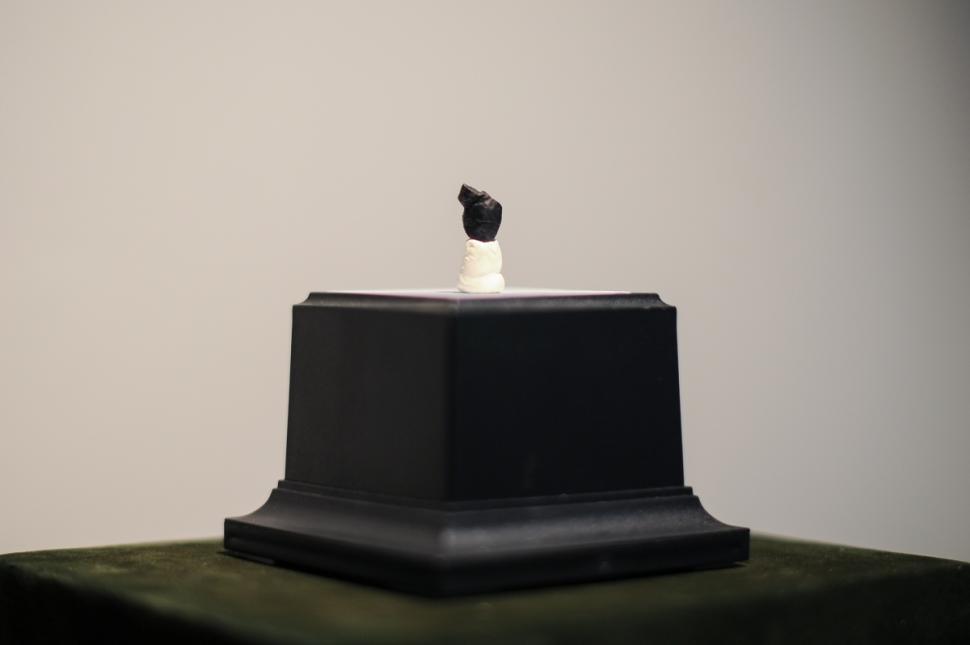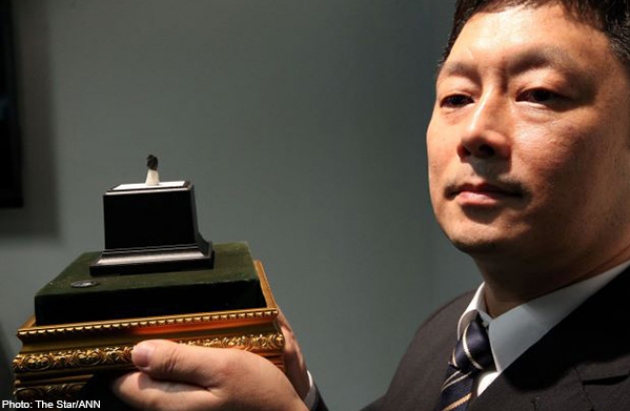140-Million-Year-Old Dinosaur Tooth Found In Pahang
The University of Malaya has found a dinosaur tooth in the rural interiors of Pahang, an indication of prehistoric existences in Malaysia.
A 140-million-year-old dinosaur tooth has been found in the rural interiors of Pahang
"We started the programme to look for dinosaur fossils two years ago. We are very excited to have found the tooth of the dinosaurian order called Ornithischian in central Pahang state" last year, lead researcher Masatoshi Sone from the University of Malaya said.
The tooth fossil was discovered last December in a sedimentary rock formation by the University of Malaysa palaeontology research team together with Japanese palaeontologists
The latest dinosaur remains were identified by the palaeontology research team led by Assoc Prof Dr Masatoshi Sone from the UM geology department, in collaboration with reptile palaeontology specialist Prof Ren Hirayama from Tokyo's Waseda University and Assoc Prof Toshifumi Komatsu from Kumamoto University.
"The discovery of raw samples pertaining to the tooth was made in December last year, following field expeditions and search for dinosaur deposits in Malaysia since September 2012," he told a press briefing at UM today. Also present were UM dean of science faculty Prof Dr Zanariah Abdullah and geology department acting head Assoc Prof Mustaffa Kamal Shuib.
Researchers are unsure of the exact species of dinosaur, but believe the tooth belongs to a new species within the "bird-hipped" Ornithischian order
A dinosaur tooth found in Malaysia is at least 140 million years old and belongs to a new species within the "bird-hipped" Ornithischian order, researchers said Thursday.
The tooth, from the Herbivorous Ornithischian dinosaur which lived during the early Jurassic to the Cretacious periods, is named Sampel UM10580 and measures just 13mm long and 10.5mm wide.
The Ornithischian dinosaur, a herbivour, would have been as big as a horse
Ornithischian, or “bird-hipped”, is a major group made up of herbivorous dinosaurs such as triceratops. The dinosaur would have been about as big as a horse, Sone said.
"(Herbivorous Ornithischian) walked on two or four legs, and did not possess body armour. It spent half its life in rivers or lakes and the other half on land and were generally believed to be territorial animals," Sone said. He said the sample is too small to provide more details, including the sex of the prehistoric creature.
This is the second discovery of dinosaur remains in Malaysia. In February, researchers also found fossils of fish-eating dinosaurs in Pahang.
The UM palaeontology research team stumbled on the tooth recently, making it the second discovery of dinosaur remains in Malaysia. In February this year, the fossils of fish-eating dinosaurs were also discovered in Pahang, Bernama reported.
In February this year, Dr Sone announced the discovery of fossil remains of what is considered the spinosauridae dinosaur, a particular family of carnivorous dinosaurs.
This discovery means it is plausible that large dinosaur fossil deposits still remain in Malaysia
"The find implies that there was an established vegetated terrestrial ecosystem in Peninsula Malaysia during the Cretaceous period," he told a packed press conference at University Malaya. The Cretaceous is defined as the period between 145 to 75 million years ago, the last period of the Mesozoic era, following the Jurassic and ending with the extinction of the dinosaurs.
While still unsure of the exact species of dinosaur, lead researcher Masatoshi Sone from the University of Malaya said the discovery means "it is plausible that large dinosaur fossil deposits still remain in Malaysia".
Dr Masatoshi Sone from the University of Malaya hopes the discovery can lead to the development of palaeontology studies in Malaysia
"We hope the discovery can lead to the development of palaeontology studies in the country. There is a lot of potential in this area of studies," Dr Sone said.
UM vice-chancellor Prof Dato Dr Mohd Amin Jalaludin said the university was thrilled and hoped it would inject fresh interest in palaeontology. “We have many geologists in Malaysia although most of them specialise in petroleum,” he said. “Few ventured into the sub-discipline of paleontology due to perceptions regarding the lack of career prospects.”
thestar.com.myThe team believes Malaysia could be a hotbed for dinosaur remnants and will continue to search for more fossils in Kedah, Kelantan, Malacca and Negri Sembilan
Dr Masathoshi Sone of Universiti Malaya (UM)’s Department of Geology said geological similarities between Malaysia and Thailand showed a great likelihood of finding more dinosaur fossils here. He said dinosaur fossils were found in Thailand over the last 40 years with several museums dedicated to dinosaurs set up in the north of the country.
thestar.com.my"We also will continue to discover more fossils in a few states of Peninsular Malaysia, including Kedah, Kelantan, Malacca and Negri Sembilan," he said.


